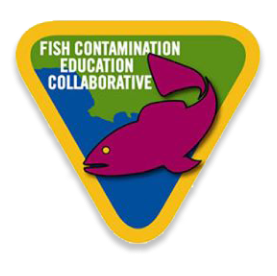Southern California Fish Advisory Hits the Web

Although more fish have been added to the “Do Not Consume” list, the majority of the region’s fish are still safe to eat and will continue to be a major natural resource for local residents to enjoy.

The new advisory will also require substantial changes to FCEC’s Angler Outreach Program; modifications which are already underway.

Subsistence fisherman will be the hardest hit by OEEHA’s new fish advisory, which has increased the region’s “Do Not Consume” fish from one to five for the most sensitive populations.
In June the California Office of Environmental Health Hazard Assessment (OEHHA) released a long-awaited health advisory report, detailing safe eating guidelines for fish from Southern California caught between Ventura Harbor and San Mateo Point.
Although the new and previous advisory retain many similarities, both differ from one another is several critical areas. One of the primary distinctions relates to the geographic span of the “Red Zone.” Previously, the “Red Zone” mainly covered the coastal area along the Palos Verdes Peninsula to Long Beach. The current “Red Zone” now spans a larger territory, beginning at Santa Monica Pier and stretching 30 miles south to Seal Beach Pier
The new report also advises against the consumption of several fish species. Under the new advisory, the most sensitive populations (women 18 to 45 and children 1 to 17) are advised against the consumption of white croaker, barred sand bass, black croaker, barracuda, and topsmelt when caught from the “Red Zone.” Previously, white croaker was the only species that fell into the “Do Not Eat” category.
Even for non-sensitive populations (women over 45 and men over 17), the number of “Do Not Consume” fish listed in the new report is significantly higher than that in the previous advisory. Non-sensitive populations are advised against eating barred sand bass, topsmelt or white croaker when caught in the “Red Zone.”
One recommendation that has remained the same is to only eat the skinless fillet. Both the old and new advisory recommend anglers and consumers alike avoid eating the fatty parts of the fish, as DDTs and PCBs tend to accumulate in these areas.
The complexities of the new advisory, from an increased number of “Do Not Consume” fish to population-specific recommendations, have presented an array of communications challenges for FCEC. Despite these difficulties, FCEC is up to the task and is currently developing new outreach materials as well as determining the most effective way to communicate these risks to the public.
The new advisory is based on data collected from 1,373 fish comprised of 22 different species collected for sampling along the Ventura, Los Angeles and Orange County coastlines. Fish were tested for one or more contaminants, including PCBs, DDTs, chlordane, dieldrin and mercury. OEHHA then evaluated the data to determine the likelihood of developing negative health effects as a result of the regular consumption of contaminated fish.

